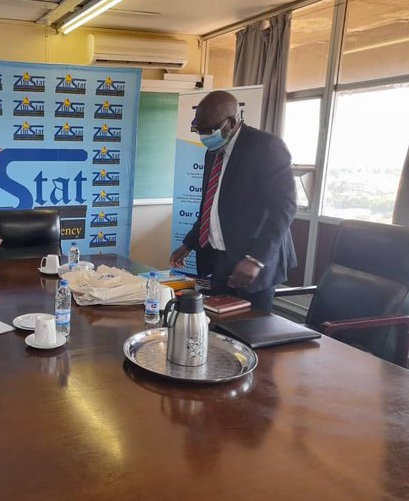|
Getting your Trinity Audio player ready…
|
Poverty and Social Impacts of COVID-19 were adverse, the virtual dissemination of the Zimbabwe Poverty 2017-2019 and the 2020-2021 third-round Rapid Consumption and Expenditure Survey (PICES) survey topline findings revealed.
In his opening remarks at the virtual workshop, Mr. Taguma Mahonde, the Director-General of the Zimbabwe National Statistics Agency (ZIMSTAT) revealed that in 2017, (ZIMSTAT), completed a PICES which generated a welfare and poverty estimate for the same year. However, the economic and social developments in late 2018 and early 2019 such as rising inflation and a below-normal rainfall season in 2018/19, may have led to changes in the poverty levels of the population, suggesting the need for an update.
“Therefore, the Government and development partners indicated the desire to obtain an updated picture of poverty levels and living conditions in the country,” Mr. Mahonde said.
One of the major highlights is that despite the debilitating effects of COVID-19, Zimbabwe has a strong poverty monitoring system.
The PICES had a number of objectives. These included but were not limited to the following: estimating the economic and social impacts of the crisis; monitoring information access and behavioral responses; understanding the economic transmission channels; assessing the impacts on small business, farming, health, food security, and welfare; as well as providing evidence to support mitigation and recovery programs and improving targeting and management.
The data was gathered from a telephone survey. Of these, 1 747 households were covered in the first round with 1 639 households in the second round. In the third round, 1 235 households were sampled. 109 Enumeration Areas were covered. The sample representative was in rural and urban areas and covered all 10 provinces. The survey was conducted from 15 December 2020 to 10 March 2021.
The proportion of people taking preventive health measures continued to fall. In the third survey wave, 58 percent avoided social gatherings, down from 91 percent in July 2020. A drop was also reported in wearing masks and washing hands.
Regarding the attitude toward COVID-19 vaccination, about 63 percent of the respondents said they will definitely get the vaccine if available free of charge, while 16 percent stated they will not get the vaccine or that they were unsure.
It emerged that the capacity to buy food improved between July 2020 and March 2021 but it remains low, especially among rural households. A significant share of households that wanted to buy basic foodstuffs such as maize meal, cooking oil, or chicken was unable to do so. This share was much higher among rural households than urban households. The most common reason was unaffordability.
The COVID-19 pandemic led to a substantial drop in employment. According to the survey, 13% of those who were working pre-COVID no longer worked in July 2020. This was 18% for the urban population. Employment had recovered slightly by March 2021 when 57% of the working-age respondents worked.
Coupled with this, a significant share of households continued to report reduced income from various sources. The extreme poverty rate was estimated to have reached 49 percent in 2020 according to the Rapid PICES second-round survey. Food security has also improved but the level of insecurity remains high.
Access to health favoured urban areas compared to rural areas in the third round. Lack of money was the primary reason for not being able to access medical treatment as cited by 78 percent of households.
With the easing of lockdown and reopening of schools since October 2020, most of the children were in school. In the third-round survey, 91 percent of school-age children were attending school. The COVID-19 pandemic continued to play a negative role in keeping children out of school. The main reason for not attending school was that teachers were not yet teaching as reported for 40 percent of those who were out of school. Those who feared getting infected constituted 8 percent. Almost 40 percent of children were engaged in some form of remote learning.
There was also a survey of the Pfumvudza/Intwasa Programme 2020 to 2021 Agricultural season in the third round of the survey. This is a government’s agricultural programme aimed at improving the productivity of smallholder farmers. About 61 percent of agricultural households participated in this programme.
Of those who participated 61 percent received a partial input package of seed and fertilizers. Of those who participated, 30 percent received the complete input package. Among those who did not participate, 36 percent did not meet the criteria of pre-planting preparations. Among those who did not participate, 41 percent were not interested. For 9 percent of households, the program was not available in their village.
